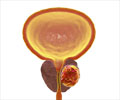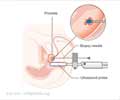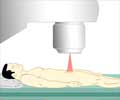
‘The protein TFIIF is a potential therapeutic target for prostate cancer as it interferes with its interaction with the motif.’
Tweet it Now
A clear target and new sites of attackThe survival and proliferation of prostate tumor cells calls for highly active androgen receptor protein. The drug used to remove tumor cells interferes with this protein by binding to a specific region of the receptor and blocking its activity. "Over time, the protein accumulates alterations and mutates, and there comes a point where it is futile to target this region with drugs because, in fact, it is no longer there," says Salvatella.
The Molecular Biophysics Laboratory, headed by Salvatella, studies the tridimensional structure and atomic movements of the androgen receptor, with the aim to find new binding sites. It has been known for some years that the protein has a small region, spanning only 20 amino acids, that is important for tumor cell survival.
The study now describes for the first time that this region usually without a structure and therefore a priori disregarded as a drug target--has a helix shape. Upon gaining this helix--it is not known how the helix occurs, another protein, called TFIIF, binds to it. The study reveals that this interaction stimulates the activity of the androgen receptor and, consequently, facilitates the survival and multiplication of tumor cells.
To this 20-residue motif in the androgen receptor, the IRB Barcelona teams now add the protein TFIIF as a potential therapeutic target for prostate cancer. "The fact that TFIIF is a folded protein with a more defined structure makes it easier to search for drugs that can interfere with its interaction with the motif. For prostate tumor cells that have become resistant to treatment, we believe that this interaction could be their last mechanism through which to survive and proliferate," explains Salvatella.
Advertisement
In collaboration with experts in computational modeling, the scientists are searching for drugs that interfere with TFIIF. "We don't know whether such drugs will have a positive effect on cells, but the data available is promising," says Salvatella.
Advertisement












